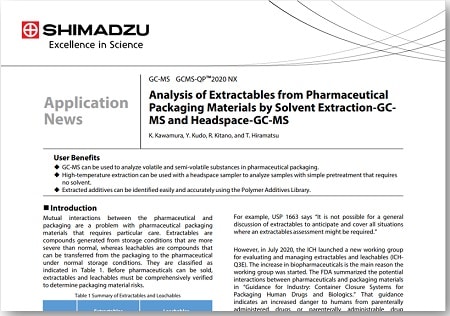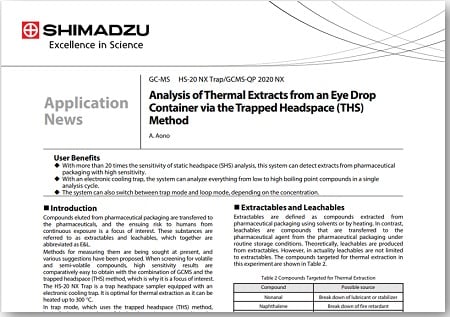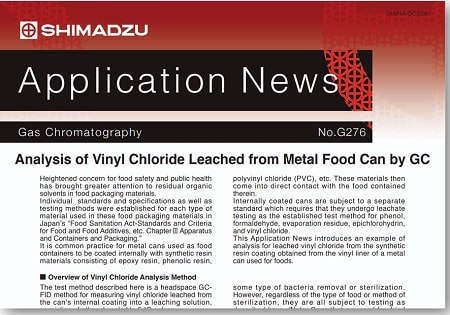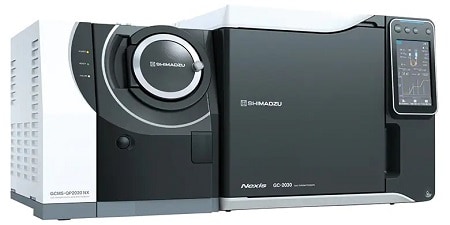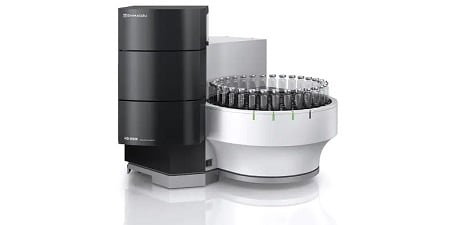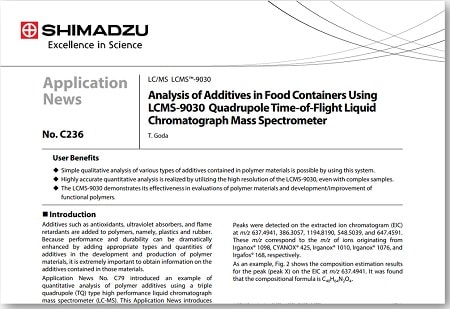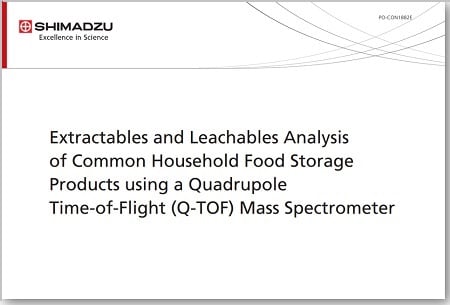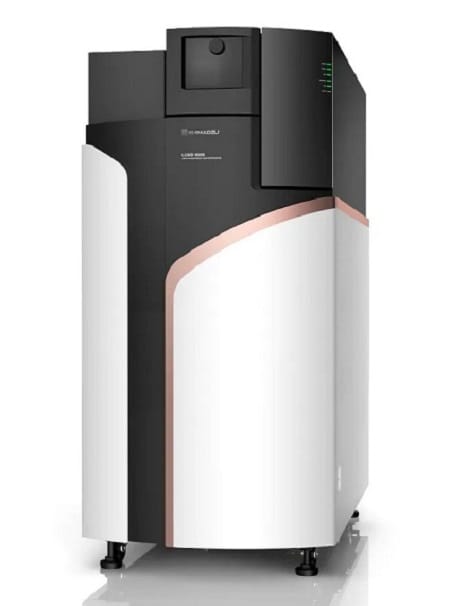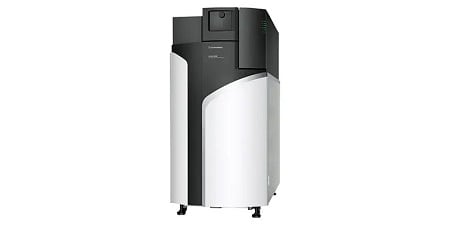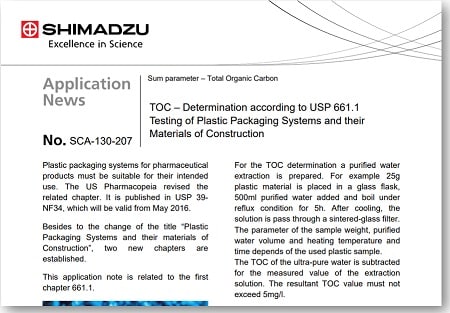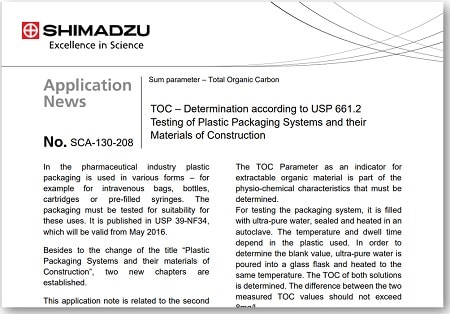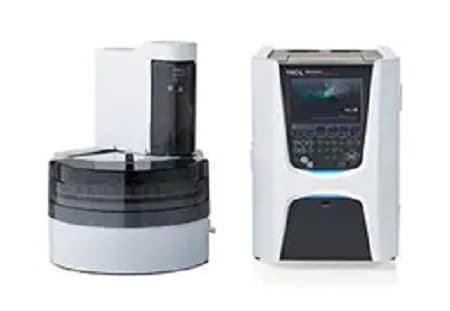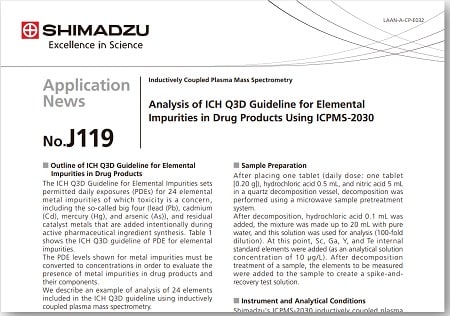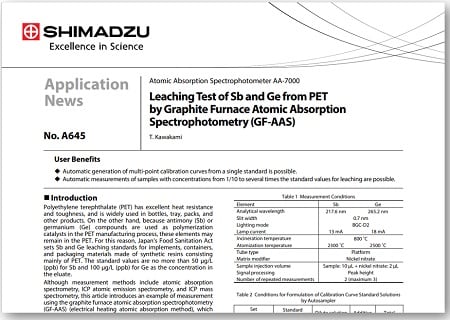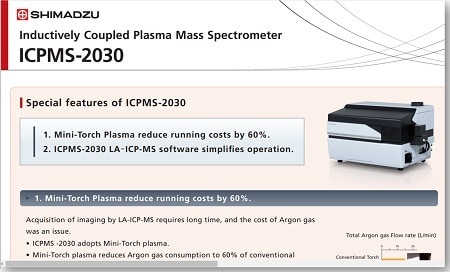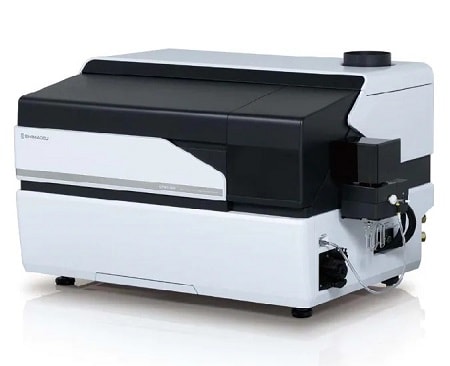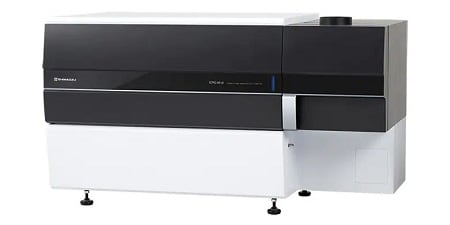Extractables & Leachables
Extractables & Leachables
An issue with pharmaceutical package
-
Why is ICH becoming standardized now?
-
Is there a unified method for extractables and leachabless?
-
What kind of measurements should be made?
What are extractables and leachables ?
- Substances that are usually transferred from packaging materials to pharmaceuticals are called "Leachables", and compounds that are produced due to extreme storage conditions are called "Extractables" (Table 1).
- Table 1 Outline of extractables and leachables
Extractables Leachables Overview Compounds that can be extracted from packaging materials and manufacturing equipment Compounds that leach from packaging materials and manufacturing equipment Conditions Under extreme conditions such as high temperature or aggressive solvent extraction Under normal operating or storage conditions Target Packaging material Pharmaceuticals
What are the risks?
- For pharmaceuticals and food products in direct contact with the packaging material, the substances transferred from the packaging material may impair the product's Critical Quality Attribute (CQA).
- Table 2 Examples of extractables and leachables effects on pharmaceutical products
Extractables Leachables Safety Immediate post-injection reaction, mutagenicity Nourish Quality uniformity Reaction / binding Chemical reaction / bond with target substancePharmaceuticals Impurities Formation of insoluble fine particles / aggregates
What kind of standard is there?
There are various standards for extractables and leachables, and the United States Pharmacopeia (USP), PQRI, BPOG, etc. have published their own documents, but there is no unified guideline. To overcome this situation, ICH established a new working group for the evaluation and management of extractables and leachables in July 2020 and reached Step 1, or ICH-Q3E, in 2020, and aim to reach Step 4 in 2024.
Why is ICH becoming standardized now?
The increase in the use of biopharmaceuticals has drawn attention to the following:
- The transfer of chemical substances by storage
- The transfer of chemical substances by manufacturing
In its “Guidance for Industry Container Closure Systems for Packaging Human Drugs and Biologics”, the FDA refers to the potential interactions between drugs and packaging materials. They claim that injectable and injectable suspension formulations pose a high risk to the human body from E&L (Table 3). As of 2021, biopharmaceuticals accounted for more than 30% of the total pharmaceutical market, and evaluation of E&L has become increasingly important. Biopharmaceuticals are difficult to take orally because of their high molecular weight, so most of it is injectable. In other words, biopharmaceuticals pose more concerns when it comes to E&L than small molecule drugs.
In addition, the cost of R&D and manufacturing of biopharmaceuticals is high, therefore, to decrease development costs and production facilities there is a growing momentum for continuous production of multiple products on a small scale, as opposed to the conventional large-scale production facility using large stainless steel culture tanks. However, since these types of production facilities use single-use equipment made of resin material, risk evaluations of leachables generated between the resin used in the facility and the pharmaceuticals must be implemented.
Table 3 Examples of Packaging Concerns for Common Classes of Drug Products
Source:Guidance for Industry Container Closure Systems for Packaging Human Drugs and Biologics
| Degree of concern Associated with the Route of Administration | Likelihood of Packaging Component Interaction Dosage | ||
|---|---|---|---|
| High | Medium | Low | |
| Highest | Inhalation aerosol and Solutions; Injections and Injectable Suspensions |
Sterile Powder and Powders for Injection; Inhalation powder |
|
| High | Ophthalmic Solutions and Suspensions; Transdermal Ointments and Patches; Nasal Aerosols and Sprays |
||
| Low | Topical Solutions and Suspensions; Topical and Lingual Aerosols; Oral Solutions and suspensions |
Topical Powders; Oral powders |
Oral Tablets and Oral (Hard and Soft Gelatin) Capsules |
Is there a unified method for E&L?
It must be said that a method that covers all chemical substances is extremely difficult. Chemical substances (monomers, polymerization initiators, antistatic agents, adhesives, etc.) contained in packaging materials and single-use products are often not disclosed due to the unique technologies, knowledge, and patents of each manufacturer. This is because there are a wide variety of chemical substances. Therefore, ICH Q3E is currently under consideration and aiming to set a threshold value similar to ICH-Q3A / B. Discussions are underway on thresholds that need to be reported, thresholds that require structural determination, and thresholds that require safety confirmation.
What kind of measurements should be made?
USP1663 recommends cooperation with vendors (suppliers). This is because the chemicals contained in packaging materials and single-use products are generally unclear. In order to efficiently discover, identify, and quantify leachables, identify the main sources together with the vendor, and determine your experimental parameters, taking in account extraction variables (temperature, time, area to volume ratio, solvent, etc).
Our solutions
The user should choose the measurement method that best suits the substance by adding the predicted substance as an extractable/leachable. We can provide a wide range of equipment and solutions needed to measure E&L.
Measurement of volatile and semi-volatile organic compounds
When volatile or semi-volatile organic matter is assumed to be the extract/leach, measurement by GC/MS is optimal. The following are examples of solvent extraction and heat extraction methods by GC/MS.
Application Note
Analysis of Extractables from Pharmaceutical Packaging Materials by Solvent Extraction-GCMS and Headspace-GC-MS
Analysis of Thermal Extracts from an Eye Drop Container via the Trapped Headspace (THS) Method
Analysis of Vinyl Chloride Leached from Metal Food Van by GC
Related Products
Measurement of refractory organic compounds
LC and LC/MS enable the identification and quantification of non-volatile organic matter.
Application Notes
Analysis of Additives in Food Containers Using LCMS-9030 Quadrupole Time-of-Flight Liquid Chromatograph Mass Spectrometer
Extractables and Leachables Analysis of Common Household Food Storage Products using a Quadrupole Time-of-Flight (Q-TOF) Mass Spectrometer
Related Products
Total organism carbon measurement
USP 661 requires component evaluation of extracts and leachates of packaging materials. You can use TOC for these tests.
Application Notes
TOC – Determination according to USP 661.1 Testing of Plastic Packaging Systems and their Materials of Construction
TOC – Determination according to USP 661.2 Testing of Plastic Packaging Systems and their Materials of Construction
Related Products
Inorganic extract measurement
ICP, ICP/MS, AA, etc. is suitable for the measurement of inorganic (element) extracts.
Application Notes
I Analysis of ICH Q3D Guideline for Elemental Impurities in Drug Products Using ICPMS-2030
Leaching Test of Sb and Ge from PET by Graphite Furnace Atomic Absorption Spectrophotometry (GF-AAS)
Precision Analysis of Toxic Elements in Plastic by ICPE-9800 Series
Related Products



